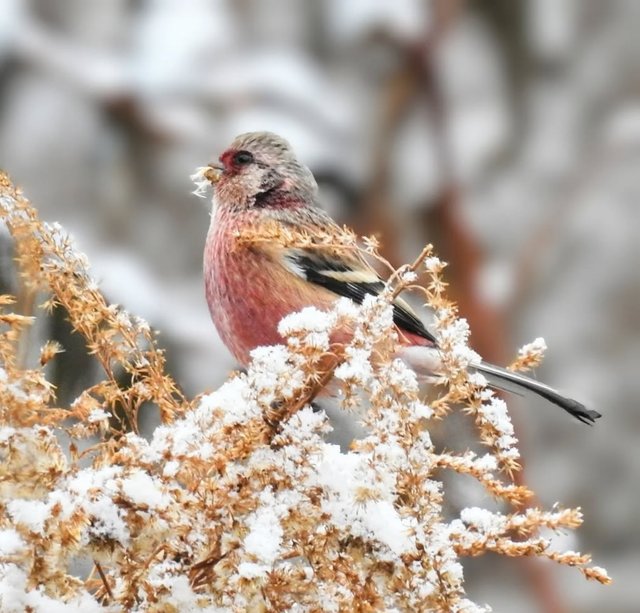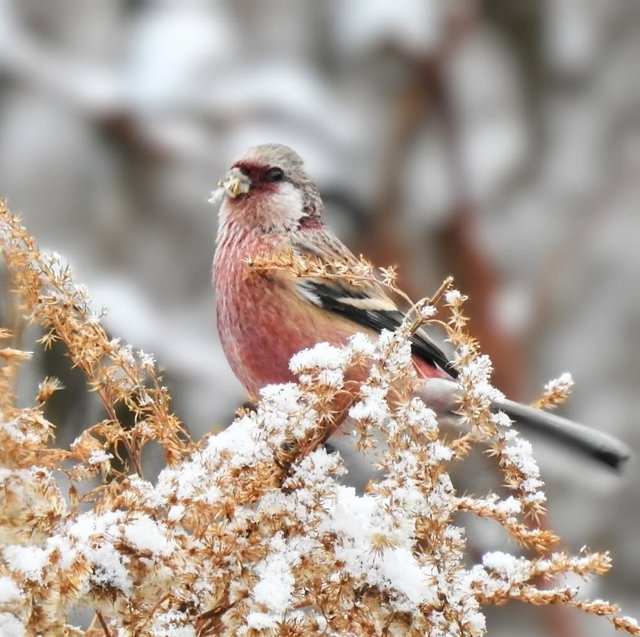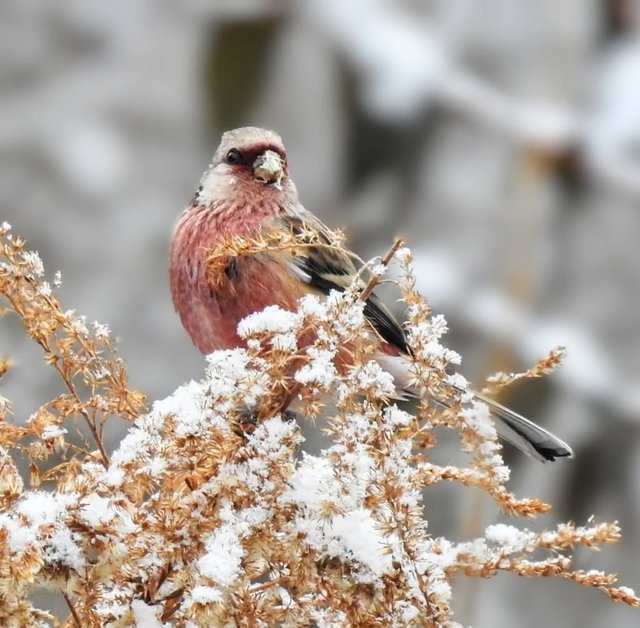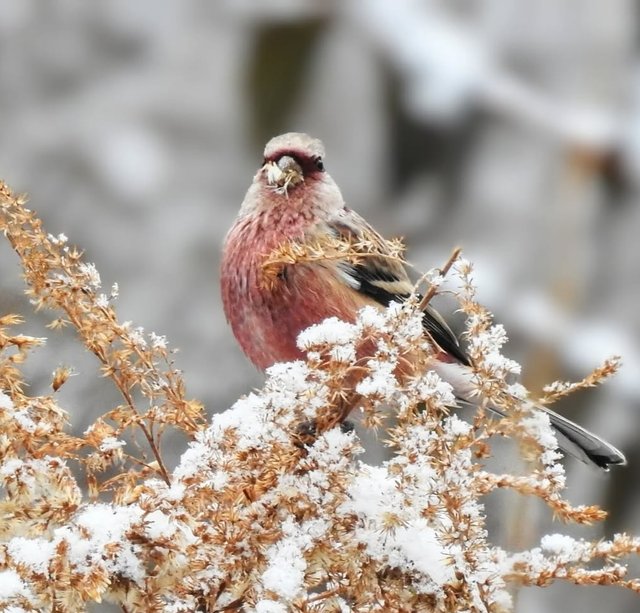So Cute Pallas's Rosefinch Bird
The Pallas's rosefinch is a stunning bird that captures the attention of birdwatchers and ornithologists alike with its vibrant plumage and fascinating ecology. Named after the renowned German naturalist Peter Simon Pallas, this species belongs to the family Fringillidae, which includes various finches and grosbeaks.
Physical Characteristics
Pallas's rosefinch is a medium-sized finch, measuring about 16–18 cm in length. The male is particularly striking, with its deep pink or rose-red plumage on the head, breast, and back. This vivid coloring is contrasted by lighter, whitish-pink streaks on the belly and flanks. The wings and tail are darker, often brownish with hints of pink. Females and juveniles, however, are less colorful, sporting a more subdued palette of brown and gray tones with faint streaking, which provides excellent camouflage in their natural habitat. The stout, conical bill is perfectly adapted for seed-eating, a staple of their diet.
Distribution and Habitat
The Pallas's rosefinch has a broad but fragmented range across northern Asia. It is commonly found in regions spanning Siberia, the Russian Far East, Mongolia, and parts of northeastern China. Its preferred habitat includes boreal forests, scrublands, and alpine meadows, often at high elevations. In the winter, these birds may descend to lower altitudes and occasionally venture into more temperate areas in search of food.
This species is well-adapted to harsh climates, thriving in areas where temperatures can plummet well below freezing. Its plumage and behavior are key to its survival in such extreme conditions.
Behavior and Diet
Pallas's rosefinch is predominantly a seed eater, favoring the seeds of various conifers, grasses, and herbaceous plants. During the breeding season, their diet may also include insects and other invertebrates, providing the extra protein necessary for raising their young.
These birds are social outside the breeding season, often seen foraging in flocks. Their calls are soft and melodic, consisting of a mix of whistles and trills that add a delightful soundtrack to the mountainous landscapes they inhabit.
Breeding and Reproduction
Breeding typically occurs in the spring and early summer, depending on the local climate. Pallas's rosefinches build cup-shaped nests from twigs, grasses, and moss, often lining them with softer materials like feathers and animal hair. These nests are usually placed in shrubs or low trees, well-hidden to protect against predators.




